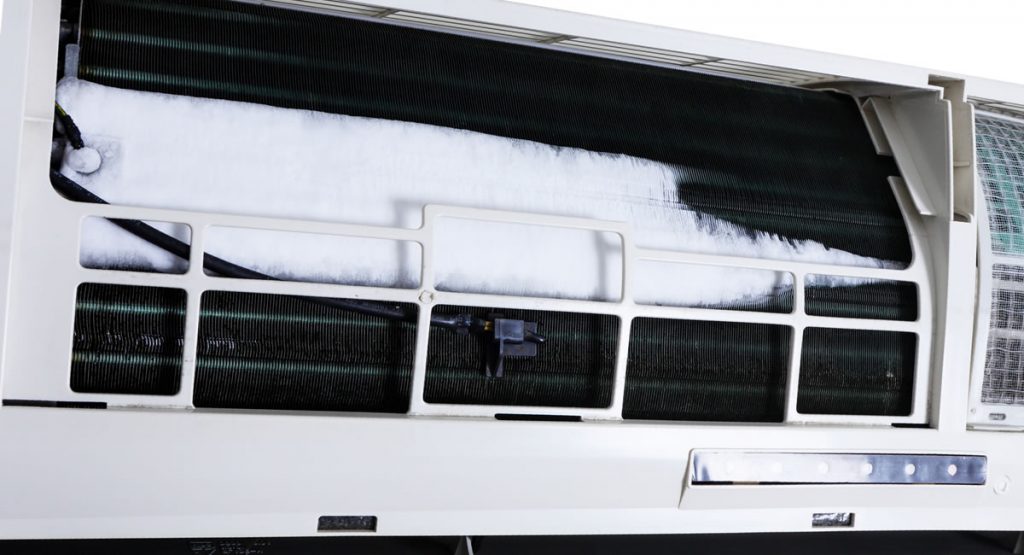Troubleshooting a Frozen AC Pipe - Effective Solutions for Home Cooling Systems
Troubleshooting a Frozen AC Pipe - Effective Solutions for Home Cooling Systems
Blog Article
The publisher is making several great points on What Do I Do If My AC Pipe Is Frozen as a whole in this article following next.

Intro
Finding that your a/c pipeline is frozen can be concerning, especially during warm summer season when you rely on your air conditioning system one of the most. Comprehending what to do in such a scenario is critical to stop additional damages to your air conditioning system and guarantee your convenience indoors.
Comprehending the Causes
A number of factors can add to the cold of an AC pipeline. Understanding these reasons can assist you resolve the problem successfully.
Lack of Airflow
One typical source of an icy air conditioner pipeline is inadequate air movement. When the air flow over the evaporator coil is restricted, it can cause the coil to go down below freezing temperature level, leading to ice development on the pipe.
Low Refrigerant Levels
Not enough refrigerant levels in your AC system can also result in a frozen pipeline. Reduced cooling agent levels can cause the pressure in the system to go down, leading to the freezing of wetness on the evaporator coil.
Cold Weather Conditions
In colder environments, freezing temperatures outside can add to the cold of air conditioner pipelines. If your a/c unit is not correctly shielded or if there are leaks in the ductwork, chilly air can penetrate the system, creating the pipe to freeze.
Dirty Air Filters
Unclean or stopped up air filters can restrict airflow in your a/c system, bring about various problems, including a frozen pipe. It's important to replace or cleanse your air filters on a regular basis to make certain proper airflow and stop ice accumulation.
Indications of a Frozen Air Conditioning Pipe
Identifying the signs of a frozen air conditioner pipe is critical for timely action.
Decreased Airflow
If you see a considerable reduction in airflow from your vents, it can suggest a frozen pipeline.
Ice Buildup on the Pipe
Visible ice build-up on the refrigerant line or the evaporator coil is a clear indication of a frozen air conditioner pipe.
Strange Sounds from the Unit
Uncommon sounds, such as hissing or gurgling, originating from your air conditioning device can signal that there's ice existing on the pipe.
Immediate Actions to Take
When confronted with a frozen air conditioning pipeline, it's important to act promptly to prevent additional damages to your air conditioning system.
Turning off the air conditioner
The first step is to shut off your ac system to stop the system from running and worsening the issue.
Checking for Blockages
Examine the location around the interior system for any obstructions that may be obstructing air movement, such as furniture or curtains.
Defrosting the Pipe
You can make use of mild techniques like putting towels soaked in cozy water around the frozen pipeline to aid thaw it slowly.
Safety nets
Taking safety nets can aid stay clear of future events of a frozen AC pipeline.
When DIY Methods Fail
If your attempts to thaw the pipe or address other concerns are unsuccessful, it's time to contact an expert.
Importance of Hiring a Professional HVAC Technician
A qualified HVAC specialist has the knowledge and devices needed to detect and repair problems with your air conditioning system securely and properly.
Regular Maintenance Checks
Arrange regular upkeep consult a professional HVAC professional to make sure that your AC system is running efficiently.
Altering Air Filters
Routinely replace or clean your air filters to prevent airflow restrictions and maintain ideal efficiency.
Protecting Exposed Pipes
If your a/c pipelines are exposed to chilly temperature levels, consider shielding them to prevent freezing during winter months.
Seeking Professional Help
If DIY techniques fail to resolve the problem or if you're uncertain concerning how to continue, it's best to seek aid from a certified HVAC specialist.
Conclusion
Taking care of a frozen AC pipe can be an irritating experience, however understanding how to respond can help decrease damage and recover comfort to your home. By understanding the causes, acknowledging the signs, and taking timely action, you can efficiently deal with the concern and prevent future incidents.
What to Do If Your AC Line Is Frozen
Make Sure All Supply and Return Air Vents Are Open
If you notice problems with airflow, the first thing you should do is check your supply and return vents. Supply vents distribute clean, conditioned air throughout your home. As this air becomes stale, it’s pulled into the return vent, where it’s reconditioned before being sent back out through the supply vent.
When these vents are closed, air won’t flow in the home. Before examining your AC, check the vents in every room and ensure they’re all open.
Check for a Dirty Air Filter
Another possible cause of limited airflow is a dirty air filter. Your air conditioner’s filters catch elements you don’t want to breathe in, such as dirt and dust. Over time, filters can become clogged, ultimately blocking air from flowing in and out. The lack of airflow can then cause the entire coil to freeze and will completely restrict any air from moving through it. The AC may need to be powered off for one to two days to allow the coil to thaw after replacing the filter to allow proper functioning of the unit. This debris can also accumulate on your AC’s evaporator coil, requiring a more serious repair. In general, air filters should be cleaned regularly (about every two weeks).
Assess Your Outdoor Unit
In addition to checking your AC, assessing the outdoor unit is a good idea. Also known as the condensing unit, it works with your interior unit to release heat outside. An issue with the outdoor unit can result in rising internal temperatures.
Overgrown Shrubs or Clogged Leaves
From leaves and twigs to shrubs and debris, there’s no shortage of outdoor elements that can accumulate around your condensing unit. When these elements get lodged inside the unit, they can block airflow. Fortunately, removing the blockage can solve the problem.
Sounds of a Broken Fan
Shrubs and leaves aren’t the only things that can impede your outdoor unit’s airflow. If the fan is broken, the unit won’t be able to properly get rid of heat — which means the internal temperature won’t go down. First, make sure the fan is spinning. If it is, check for the following sounds of a broken fan:
Buzzing Rattling Screeching Hissing Clicking Preventative Measures
Nobody wants to deal with a frozen AC line. In addition to causing problems with your air conditioner, they require professional repairs. On the bright side, there are preventative measures you can take to help ensure this issue doesn’t arise in the first place.
https://www.coopergreenteam.com/blog/what-to-do-if-ac-line-frozen

We were introduced to that article about Air Conditioner Frozen? How To Fix your Frozen AC Line through a friend on our other web property. If you appreciated our blog entry kindly remember to share it. Many thanks for your time. Visit us again soon.
Schedule Your Job Now Report this page